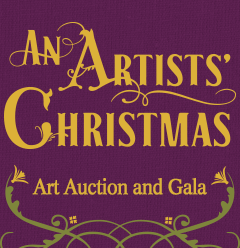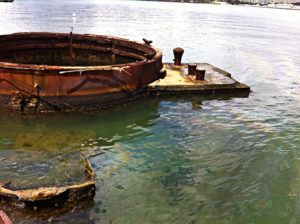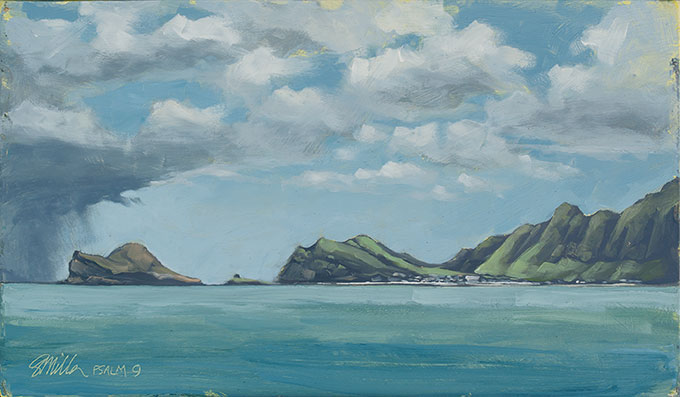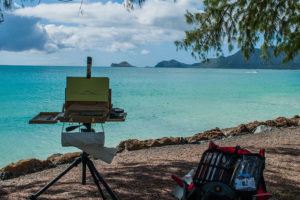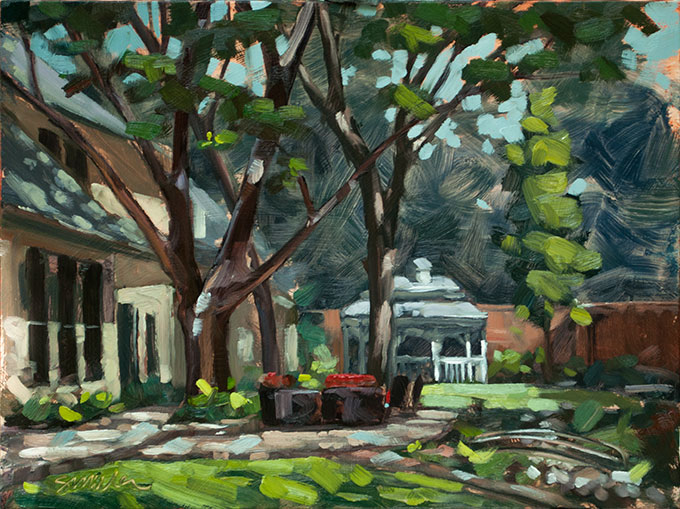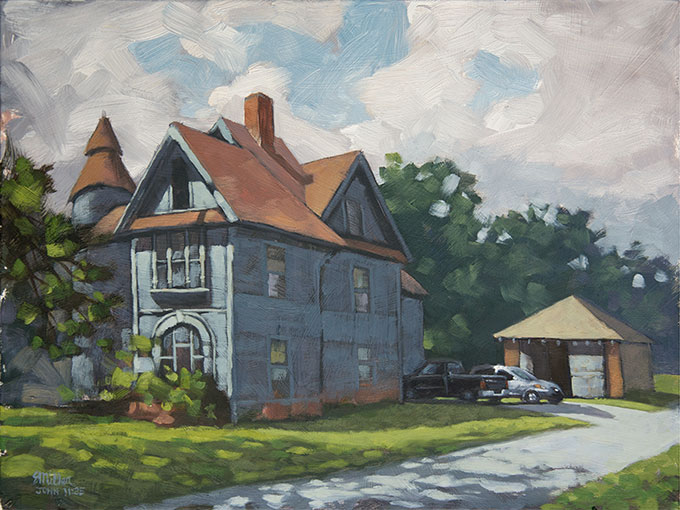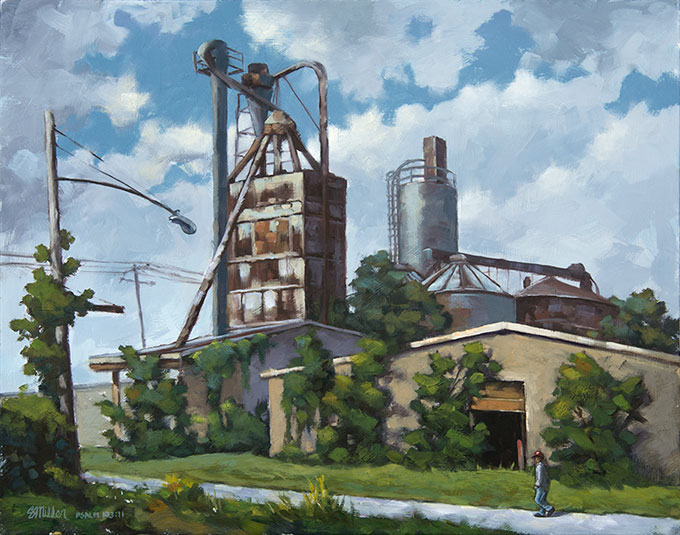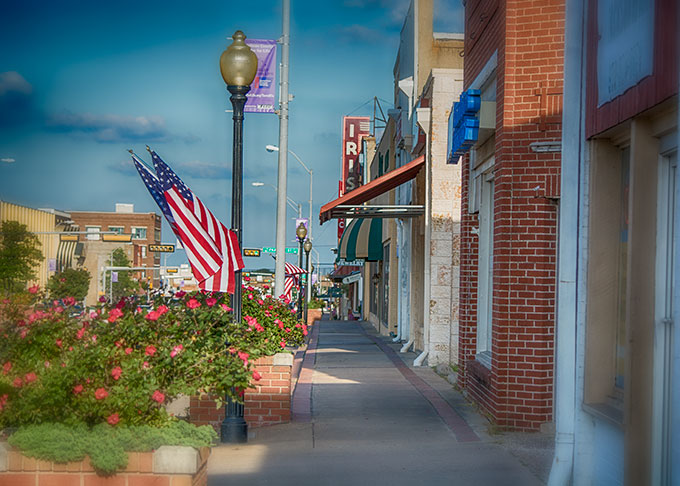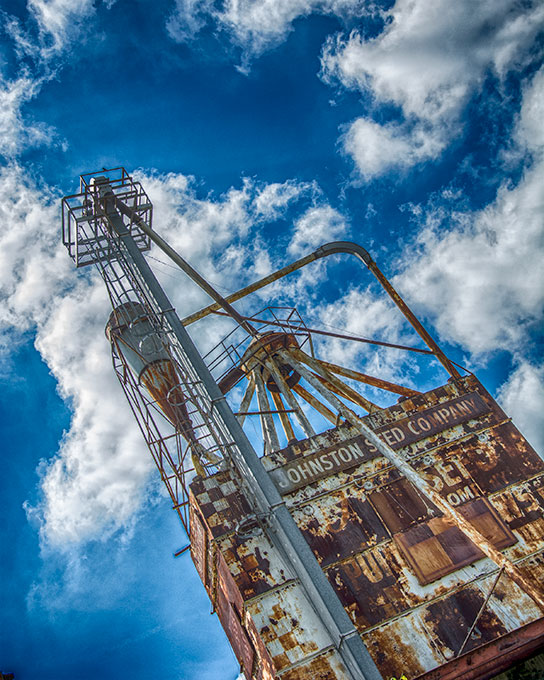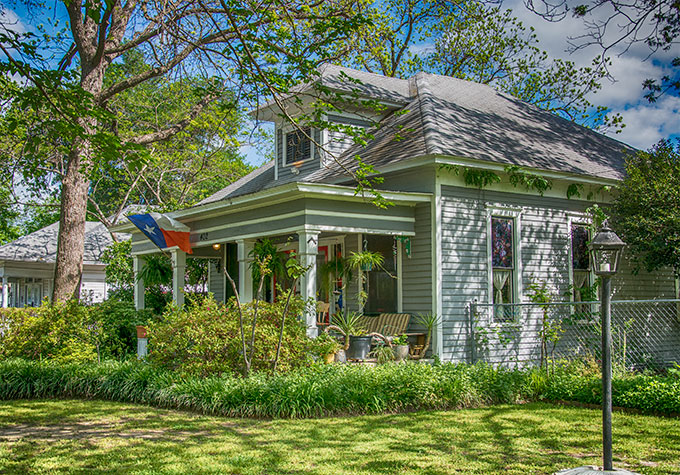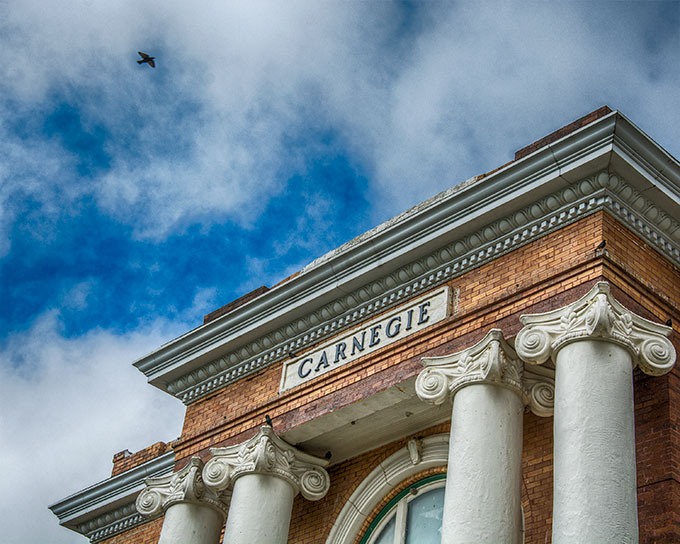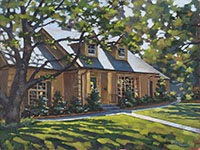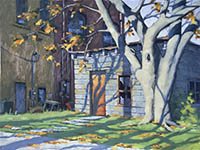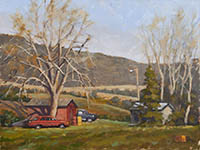The annual “Paint the Glen” Plein Air Event that is sponsored by the Barnard Mill Art League, kicked off Saturday morning, April 9th, with an unofficial “nocturne” outing Friday night, April 8th. See bottom of page for more.

Kent Brewer and Steve Miller at the annual Paint the Glen Plein Air event in Glen Rose, Texas
Spring in Glen Rose, Texas is always beautiful. Bluebonnets, Indian Paintbrushes and cactus add to the fresh new spring greens of the fields and trees. Add to that the historic setting of Glen Rose, and especially Barnard’s Mill and Art Museum, and you have the perfect setting for a great paint outing. In order to simplify the limited time we had, I painted two pieces in the same location Saturday morning, moving about 80 feet from one spot to the other.
When I finally got down to Barnard’s Mill and Art Museum early Saturday morning to sign in, I was greeted by an old friend, Kent Brewer. Kent is an excellent artist – I really like the way he handles color, values and brush work in is paintings. I joined him in painting the old silo-looking “The Round House” that sat beside the main Barnard’s Mill building. I am grateful to Kent for his input in the piece I turned in for the competition. It won first place, and I told Kent I felt I should share some of the winnings with him for his input. (I didn’t follow through on that kindness though.) When this first piece was complete, we moved on to paint the same subject, but from a different angle. Both images below.
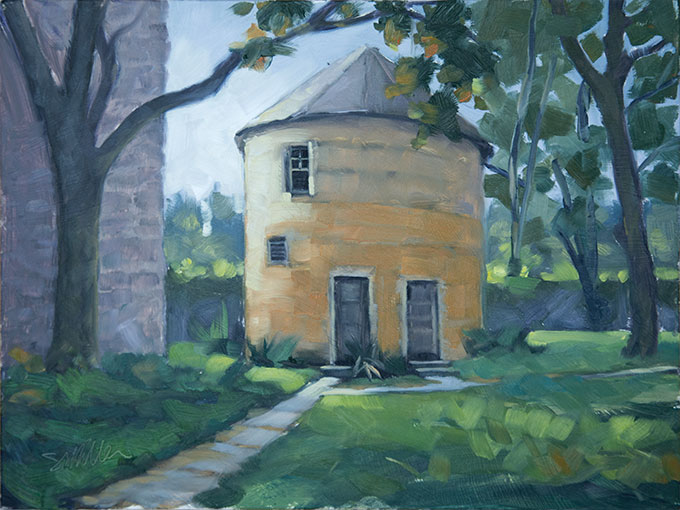
The Round House, oil on panel, 12 x 9 – won First Place in the Paint the Glen Plein Air competition and show. This piece also sold. I am grateful for both.
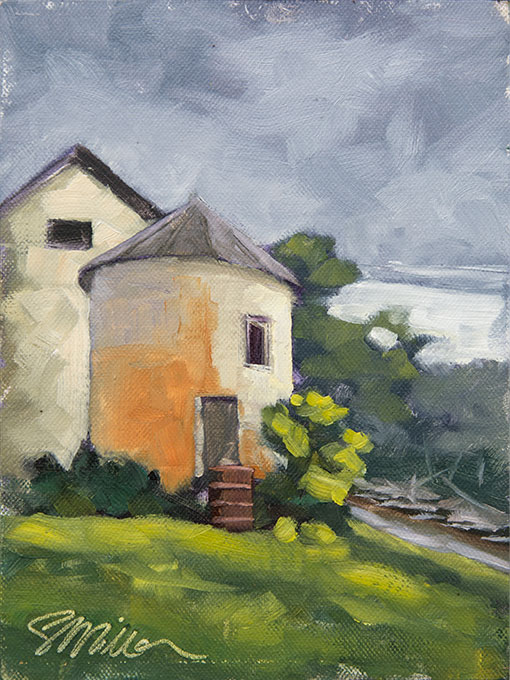
Second plein air piece painted during the “Paint the Glen” event – The Round House, Side Veiw, 6 x 8 on canvas board
Friday evening after dark, the day before the Saturday event, there was to be an “unofficial” nocturne painting time there near the Glen Rose square. According to an online source (so it must be true 🙂 the term “nocturne painting” was first used by James Abbott McNeill Whistler to describe a painting style that renders nighttime scenes, or under a condition of the absence of light.
I Don’t know what happened to those official-unofficial plans, but Trent Summers and I found ourselves on the basically empty downtown streets of Glen Rose, around 9:00 in the evening, just off the square straining our eyes to create a painting in the limited, if not absent light conditions. The world of the “Nocturne”.
I wore a LED headlamp that lit whatever the immediate area I was looking at, whether my palette or 9 x 12 panel. But, it never lit them at the same time since the light was very limited to one foot radius. It was an adventure to say the least. The exercise led to much thought about light and shadow, and darkness. Light is one of those things often taken for granted…until you are in want of more of it. When I was a kid my cousins and I took kerosene lamps into a large cave in Georgia. Without any light source in the cave at all, one kerosene lamp ripped the thick darkness open, making travel in the cave possible and somewhat safe.
While painting in the cool air on this particular spring night in Glen Rose, Texas, studying how a single street light worked it’s magic on the surrounding tree, building and ground, I thought of another Light that shined in darkness.

This Nocturne painting is called “Midnight”. Painted a bit before midnight in Glen Rose, Texas
John chapter 1, verses 4 and 5 make an interesting statement: “In Him was life, and the life was the Light of men. The Light shines in the darkness, and the darkness did not comprehend it.”
I think of those blind fish or blind salamanders that live in the light-less caves in various location in the world. Light has no effect on them. They do not comprehend the light at all. They are blind.
One of the very clear things you see in scripture is that there is a blindness in all people. Jesus said this in Luke 4:18 “THE SPIRIT OF THE LORD IS UPON ME, BECAUSE HE ANOINTED ME TO PREACH THE GOSPEL TO THE POOR. HE HAS SENT ME TO PROCLAIM RELEASE TO THE CAPTIVES, AND RECOVERY OF SIGHT TO THE BLIND, TO SET FREE THOSE WHO ARE OPPRESSED…”
Recovery of sight to the blind…we all come into the world like a blind cave fish – we do not comprehend light. We hide in spiritual darkness, much like Gollum in the classic work by J.R.R. Tolkien, Lord of the Rings. Our spiritual dead-ness, our sin keeps us hiding in the shadows, separated from God.
Jesus came to fix that. He came to open blind eyes, give spiritual site in place of spiritual blindness. When light begins to shine in darkness, everything in the light’s path begins to be reveled. Beauty replaces the colorless world as light, shadow, form and color flood in. As Jesus said, Life comes in with the Light.
“Then Jesus again spoke to them, saying, “I am the Light of the world; he who follows Me will not walk in the darkness, but will have the Light of life.” John 8:12















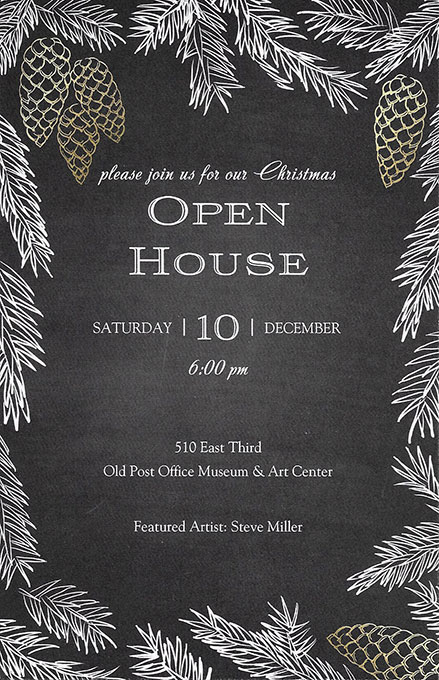
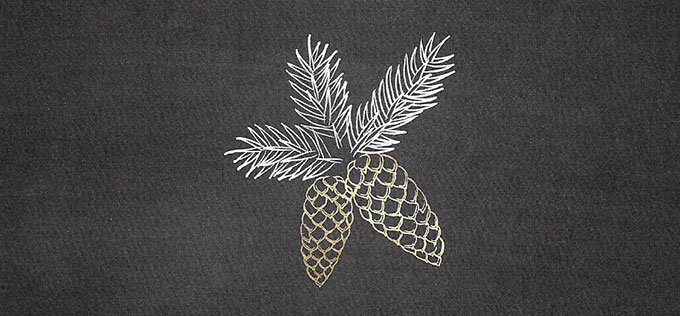
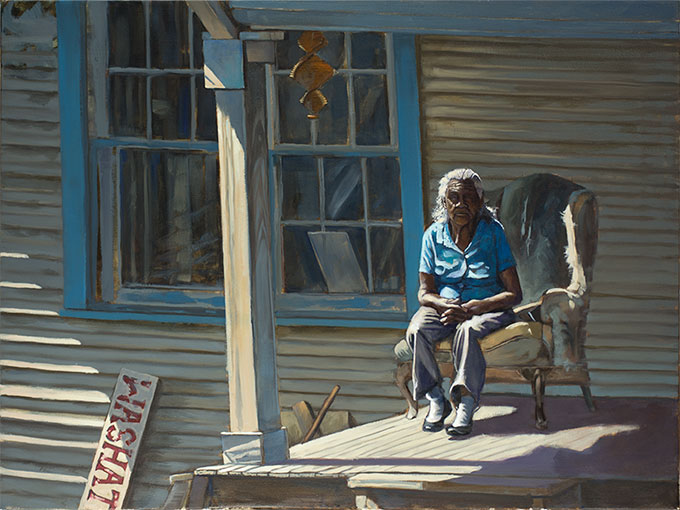

 I had a couple of oils in the competition, a small one called “Fall Primaries” and another larger one called “Autumn Music”, which depicts a man caring a guitar up the sidewalk in a neighborhood on an overcast day. I shot the photo reference while visiting Cleveland, Tennessee, a place where I spent several years in the late 60’s and early 70’s. Autumn Music won 2nd place in Oils in the competition.
I had a couple of oils in the competition, a small one called “Fall Primaries” and another larger one called “Autumn Music”, which depicts a man caring a guitar up the sidewalk in a neighborhood on an overcast day. I shot the photo reference while visiting Cleveland, Tennessee, a place where I spent several years in the late 60’s and early 70’s. Autumn Music won 2nd place in Oils in the competition.
